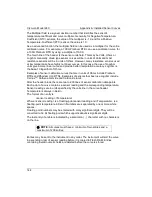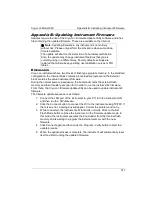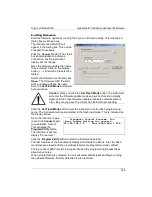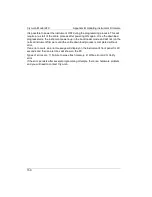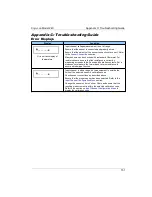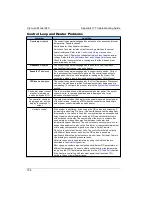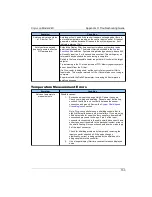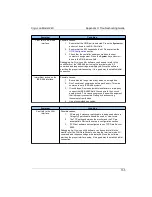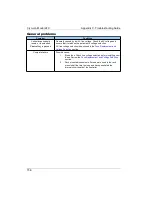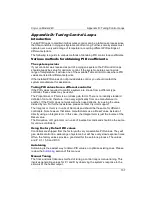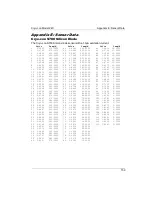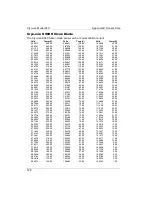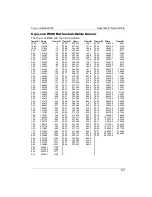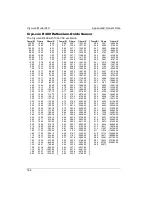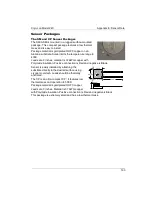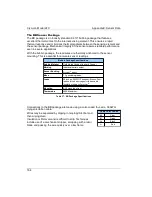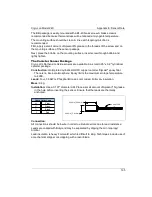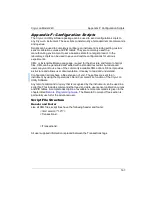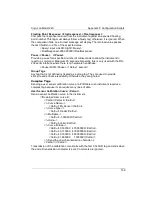
Cryo-con Model 24C
Appendix C: Troubleshooting Guide
Symptom
Condition
DC offset in temperature
measurements.
Possible causes:
1.
The wrong sensor type or sensor calibration curve is being
used. Refer to the
Input Channel Configuration Menu
section.
2.
DC offset in cryostat wiring. Review the
Thermal EMF and AC
Bias Issues
section. Use AC bias, if necessary, to cancel the
offset error.
3.
A four-wire measurement is not being used. Some cryostats
use a to a two-wire measurement internally. This can cause
offset errors due to lead resistance.
4.
Thermocouples: These sensors will often have DC offset
errors. Use offset calibration procedure described in the
section titled “Using Thermocouple Sensors”.
No temperature reading.
Review the
Error Displays
section above.
Remote I/O problems
Symptom
Condition
Can’t talk to RS-232
interface.
Possible causes:
1.
Ensure that the RS-232 port is selected. Press the System
key and scroll down to the RIO-Port: field.
2.
Ensure that the baud rate of the controller matches that of
the host computer. To check the controller’s baud rate, press
the System key and scroll down to the RIO-RS232 field.
3.
Ensure that the host computer settings are 8-bits, No parity,
one stop bit.
4.
The RS-232 port does not have an effective hardware
handshake method. Therefore, terminator characters must
be used on all strings sent to the controller. Review the
RS-
232 Configuration
section.
5.
Ensure that you are using a Null-Modem type cable. There
are many variations of RS-232 cables and only the Null-
Modem cable will work with Cryo-con controllers. This cable
is detailed in the
RS-232 Connections
section.
Debugging tip: Cryo-con utility software can be used to talk to the
controller over the RS-232 port using the terminal mode. All command
and response strings are displayed. This is a good way to establish a
connection.
Intermittent lockup on RS-
232 interface.
Possible causes:
1.
Long cables. Try using a lower baud rate. In some cases,
inserting a 50mS delay between commands will help.
2.
Noise pickup. Try using shielded cables with the shield
connected to a metal backshell at both ends.
3.
Don’t send reset (RST) commands to the controller before
reading.
154





